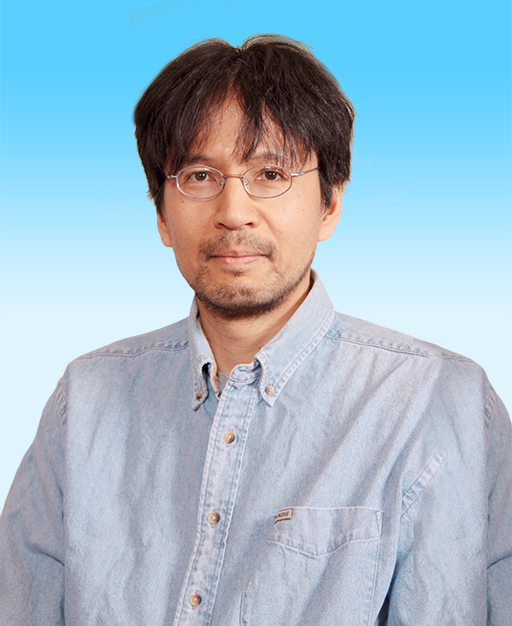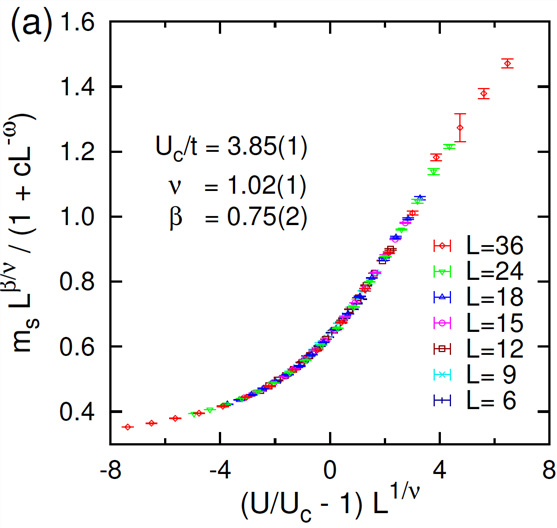TOP
 Research
Research
 Research Teams for Science of Computing and Science by Computing
Research Teams for Science of Computing and Science by Computing
 Computational Materials Science Research Team
Computational Materials Science Research Team
Computational Materials Science Research Team
Japanese
Team Principal Seiji Yunoki
 yunoki[at]riken.jp (Lab location: Kobe)
yunoki[at]riken.jp (Lab location: Kobe)- Please change [at] to @
- 2017
- Chief Scientist, Computational Condensed Matter Physics Laboratory, RIKEN(-present)
- 2012
- Team leader, Computational Quantum Matter Research Team, CEMS, RIKEN
- 2010
- Team leader, Computational Materials Science Research Team, AICS,RIKEN (-present)
- 2008
- Associate Chief Scientist, Computational Condensed Matter Physics Laboratory, RIKEN
- 2006
- Long-Term Visiting Scientist/Research Assistant Professor, Oak Ridge National Laboratory/University of Tennessee, USA
- 2001
- Post-Doc Researcher, International School of Advanced Studies (SISSA),Italy
- 1999
- Post-Doc Researcher Materials Science Center, University of Groningen, The Netherlands
- 1996
- Post-Doc Researcher, National High Magnetic Field Laboratory, USA
- 1996
- Graduated from Applied Physics, Graduate School, Division of Engineering, Nagoya University
Keyword
- Condensed matter physics
- Materials science
Research summary
One of our main focuses is to develop state-of-the-art numerical methods such as quantum Monte Carlo methods and tensor network methods including the density matrix renormalization method for simulating ground states as well as quantum dynamics of strongly correlated quantum systems. We are also interested in developing quantum algorithms for quantum many-body systems and quantum computing simulations using classical computers such as Supercomputer Fugaku, as a ground challenge of information science in quest of a new computing paradigm.
Main research results
Largest simulations ever for interacting Dirac electrons and universality of metal-insulator transitions
Understanding the nature of metal-insulator transitions induced by Coulomb repulsion between electrons has been one of the most fundamental issues in condensed matter physics. Considering the simplest model, i.e., a Hubbard model on the honeycomb lattice, we have analyzed the metal-insulator transition that occurs in this model when increasing the repulsive interaction. This model has attracted lots of interests because it is considered as one of the most effective models for graphene, where the non-interacting electrons exhibit the relativistic Dirac dispersion.
We have developed a quantum Monte Carlo software application to perform the largest ever simulations for the Hubbard model. Using the K computer, we successfully simulated 2,592 electrons in 2012, which was four times larger than the previous world record (648 electrons). Most importantly, we have shown that there is no intermediate phase between the metallic and insulating phases, and thus the transition is continuous. In addition, we have determined with high accuracy the critical exponents that characterize this metal-insulator transition of interacting Dirac electrons. Very recently, we extended our software application to simulate interacting electrons more than 10,000 electrons, which was never thought possible previously, to show the Fermi liquid behavior in the two-dimensional interacting Dirac electrons. In the future, we will attempt even larger simulations to address more fundamental issues in modern condensed matter physics.

Representative papers
- RY. Sun, T. Shirakawa, and S. Yunoki:
"Efficient variational quantum circuit structure for correlated topological phases"
Physical Review B 108, 075127 (2023). - RY. Sun, T. Shirakawa, and S. Yunoki:
"Parameterized quantum circuit for weight-adjustable quantum loop gas"
Physical Review B 107, L041109 (2023). - T. Shirakawa and S. Yunoki:
"Local multiplet formation around a single vacancy in graphene: An effective Anderson model analysis based on the block-Lanczos DMRG method"
Physical Review B 105, 184110 (2022). - Y. Otsuka, T. Yoshida, K. Kudo, S. Yunoki, and Y. Hatsugai:
"Higher order topological Mott insulator on the pyrochlore lattice"
Scientific Reports 11, 20270 (2021). - T. Shirakawa, K. Seki, and S. Yunoki:
"Discretized quantum adiabatic process for free fermions and comparison with the imaginary-time evolution"
Physical Review Research 3, 013004 (2021). - Y. Otsuka, K. Seki, S. Sorella, and S. Yunoki:
"Dirac electrons in the square-lattice Hubbard model with a d-wave pairing field: The chiral Heisenberg universality class revisited"
Physical Review B 102, 235105 (2020). - T. Shirakawa, S. Miyakoshi, and S. Yunoki:
"Photoinduced eta pairing in the Kondo lattice model"
Physical Review B 101, 174307 (2020). - K. Seki, Y. Otsuka, S. Yunoki, and S. Sorella:
"Fermi-liquid ground state of interacting Dirac fermions in two dimensions"
Physical Review B 99, 125145 (2019). - M. Khazaei, A. Mishra, N. S. Venkataramanan, A. K. Singh, and S. Yunoki:
"Recent advances in MXenes: From fundamentals to applications"
Current Opinion in Solid State and Materials Science 23, 164 (2019). - Y. Otsuka, K. Seki, S. Sorella, and S. Yunoki:
"Quantum criticality in the metal-superconductor transition of interacting Dirac fermions on a triangular lattice"
Physical Review B 98, 035126 (2018).
